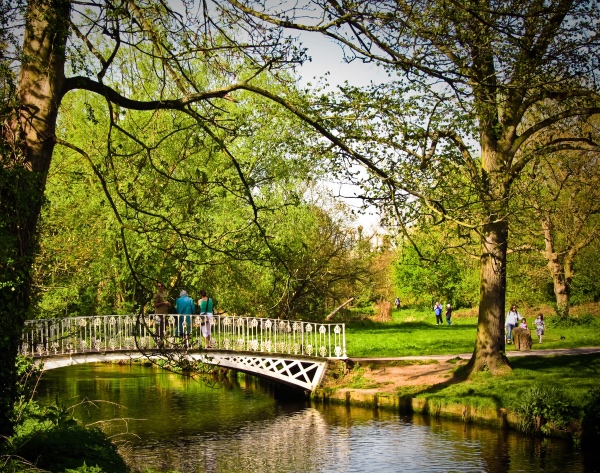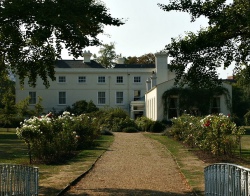
Located on the banks of the River Wandle in Morden, south London, Morden Hall was built for the Garth family in the 18th century on the site of an earlier manor house.
The manor, which had once been held by the abbot of Westminster Abbey, had been in the Garth family since it was purchased by Richard Garth, a clerk and son of a successful lawyer, following the Dissolution in the 16th century. At the time, the newly built manor house, apparently known as Growtes, stood just to the south of where the hall now stands.
 The now Grade II-listed hall was built for the family in between 1759 and 1765 and over the next century a number of tenants occupied it – it was used at once point as a school for young gentlemen.
The now Grade II-listed hall was built for the family in between 1759 and 1765 and over the next century a number of tenants occupied it – it was used at once point as a school for young gentlemen.
In 1867, the Garth family sold the altered house and estate to a tobacco merchant, Gilliat Hatfeild (Gilliat’s father, Alexander Hatfeild, had, since 1834, leased two mills on the site to ground tobacco from plantations in Virginia into snuff). Gilliat created a park from the land surrounding the hall, planting trees and demolishing cottages.
His son, Gilliat Edward Hatfeild, took over the running of the estate on the death of his father in 1906. During World War I, the hall saw service as a convalescent home for the military and was later used by the Salvation as a home for women and children.
In 1941, Alexander’s grandson, Gilliat Edward Hatfield – who had closed the mills and snuff-making factory in the early 1920s – left the house and the core of the estate (the remainder was occupied by new housing and roads) to the National Trust. The hall itself has since been used as a restaurant and, following a 2015 renovation, is now a venue for weddings.
The 125 acres of grounds, which are open to the public, contain a variety of landscapes including the remains of a deer park, meadows and a wetland. The restored rose garden was first planted by Gilliat Edward Hatfeild in around 1921 in part of what had been his father’s deer park. It was laid out in two halves separated by a small stream with rose-covered bridges. The rose garden also features a massive Westfelton Yew which is believed to be hundreds of years old.
The snuff mills, which were built in 1750 and 1830, are still standing (the western mill contains an exhibition on the life of the Morden mill workers in the Victorian era) as are various workshops, the former stables and Morden Cottage, parts of which date from the 1750s and which was used by GE Hatfeild who preferred living there to the hall. Facilities in the park include the Potting Shed Café near the main entrance and a second-hand bookshop in the former stable yard.
WHERE: Morden Hall Park, Morden Hall Road, Morden (nearest train station is Stableyard); WHEN: The rose garden is open from 8am to 6pm daily (check the website for other times); COST: Free; WEBSITE: www.nationaltrust.org.uk/morden-hall-park.
PICTURES: Top – The White Bridge over the River Wandle at Modern Hall Park (Garry Knight/licensed under CC BY 2.0); Right – Morden Hall from the park (public domain)































